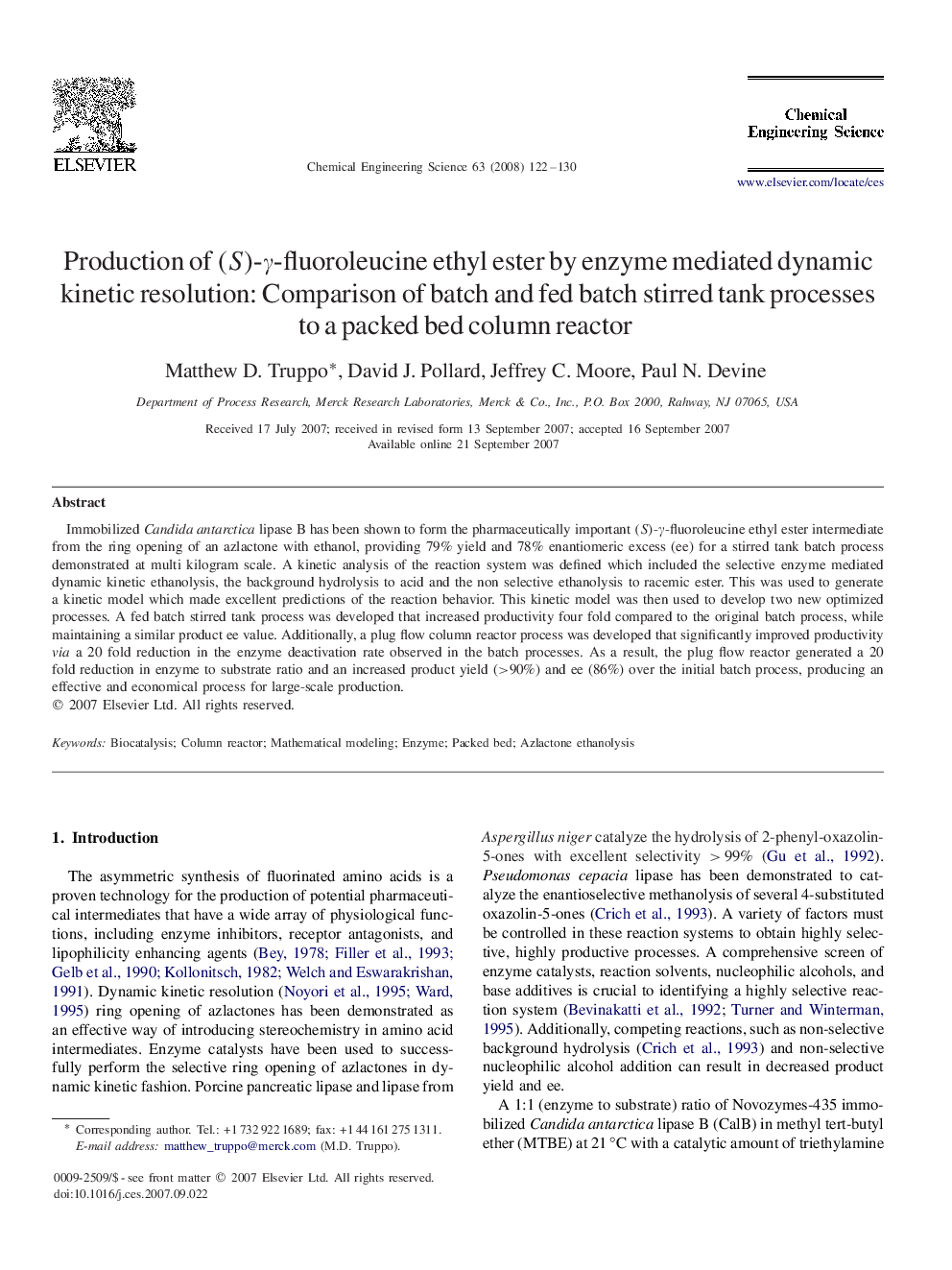| Article ID | Journal | Published Year | Pages | File Type |
|---|---|---|---|---|
| 159602 | Chemical Engineering Science | 2008 | 9 Pages |
Immobilized Candida antarctica lipase B has been shown to form the pharmaceutically important (S)(S)-γγ-fluoroleucine ethyl ester intermediate from the ring opening of an azlactone with ethanol, providing 79% yield and 78% enantiomeric excess (ee) for a stirred tank batch process demonstrated at multi kilogram scale. A kinetic analysis of the reaction system was defined which included the selective enzyme mediated dynamic kinetic ethanolysis, the background hydrolysis to acid and the non selective ethanolysis to racemic ester. This was used to generate a kinetic model which made excellent predictions of the reaction behavior. This kinetic model was then used to develop two new optimized processes. A fed batch stirred tank process was developed that increased productivity four fold compared to the original batch process, while maintaining a similar product ee value. Additionally, a plug flow column reactor process was developed that significantly improved productivity via a 20 fold reduction in the enzyme deactivation rate observed in the batch processes. As a result, the plug flow reactor generated a 20 fold reduction in enzyme to substrate ratio and an increased product yield (>>90%) and ee (86%) over the initial batch process, producing an effective and economical process for large-scale production.
